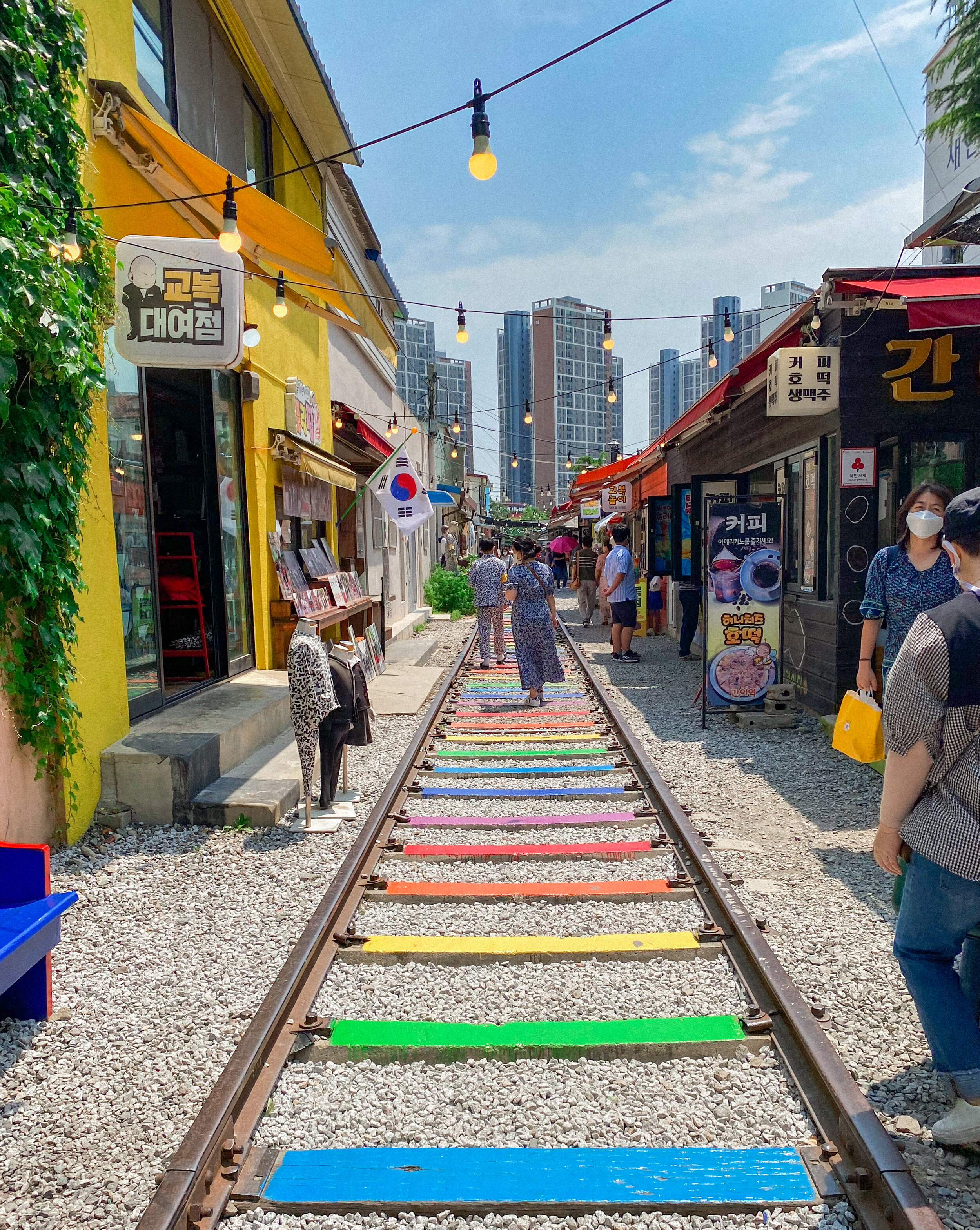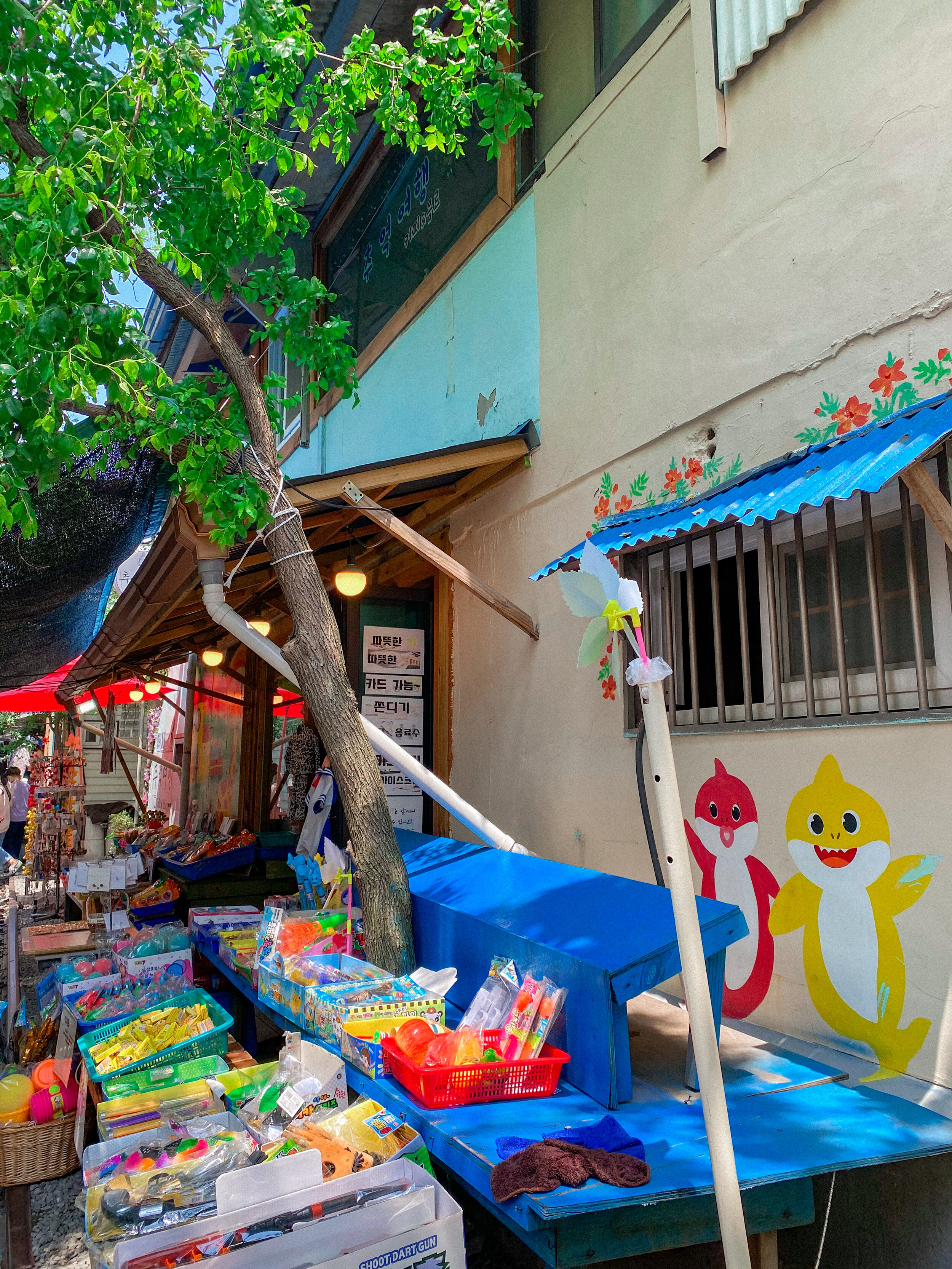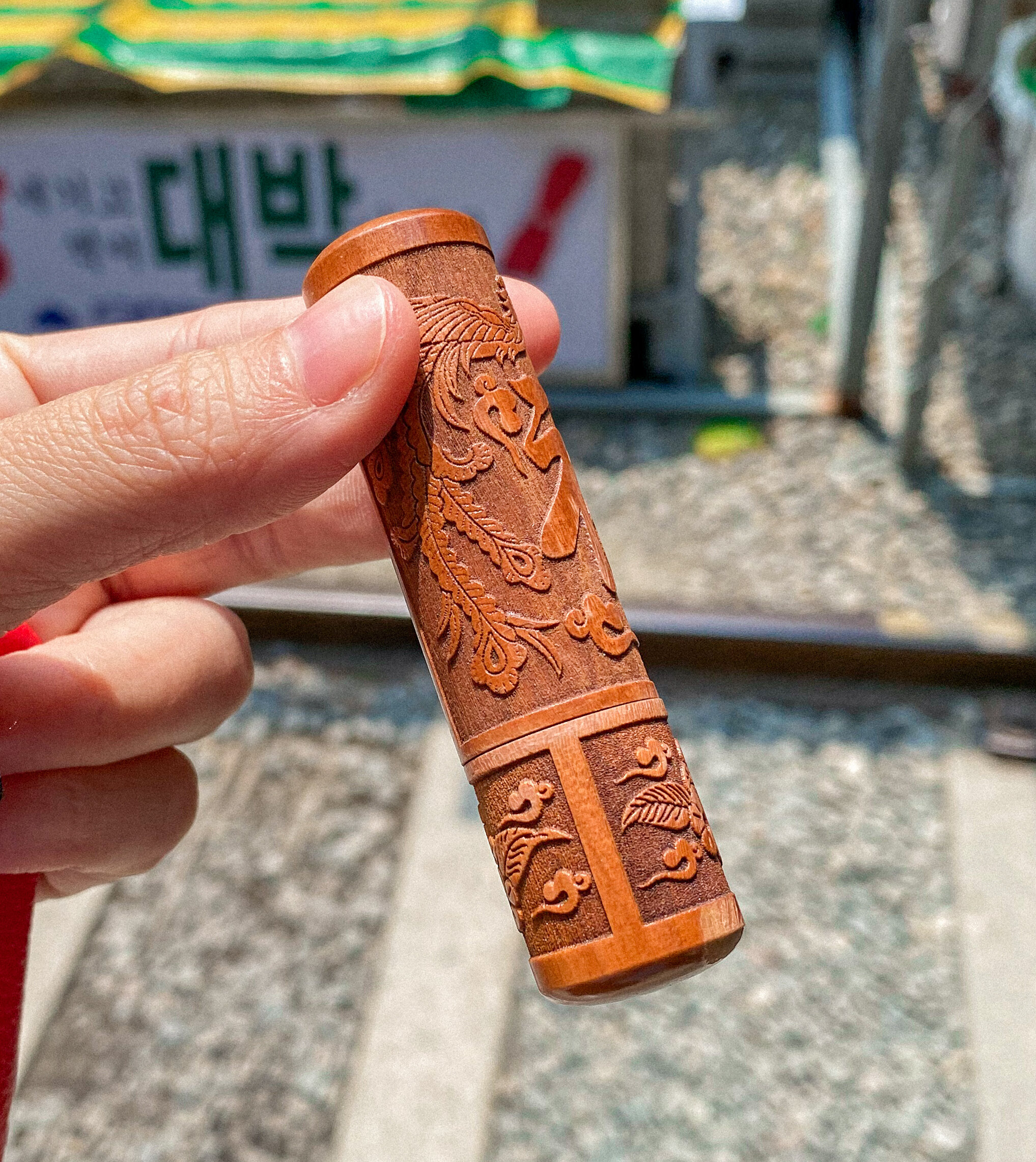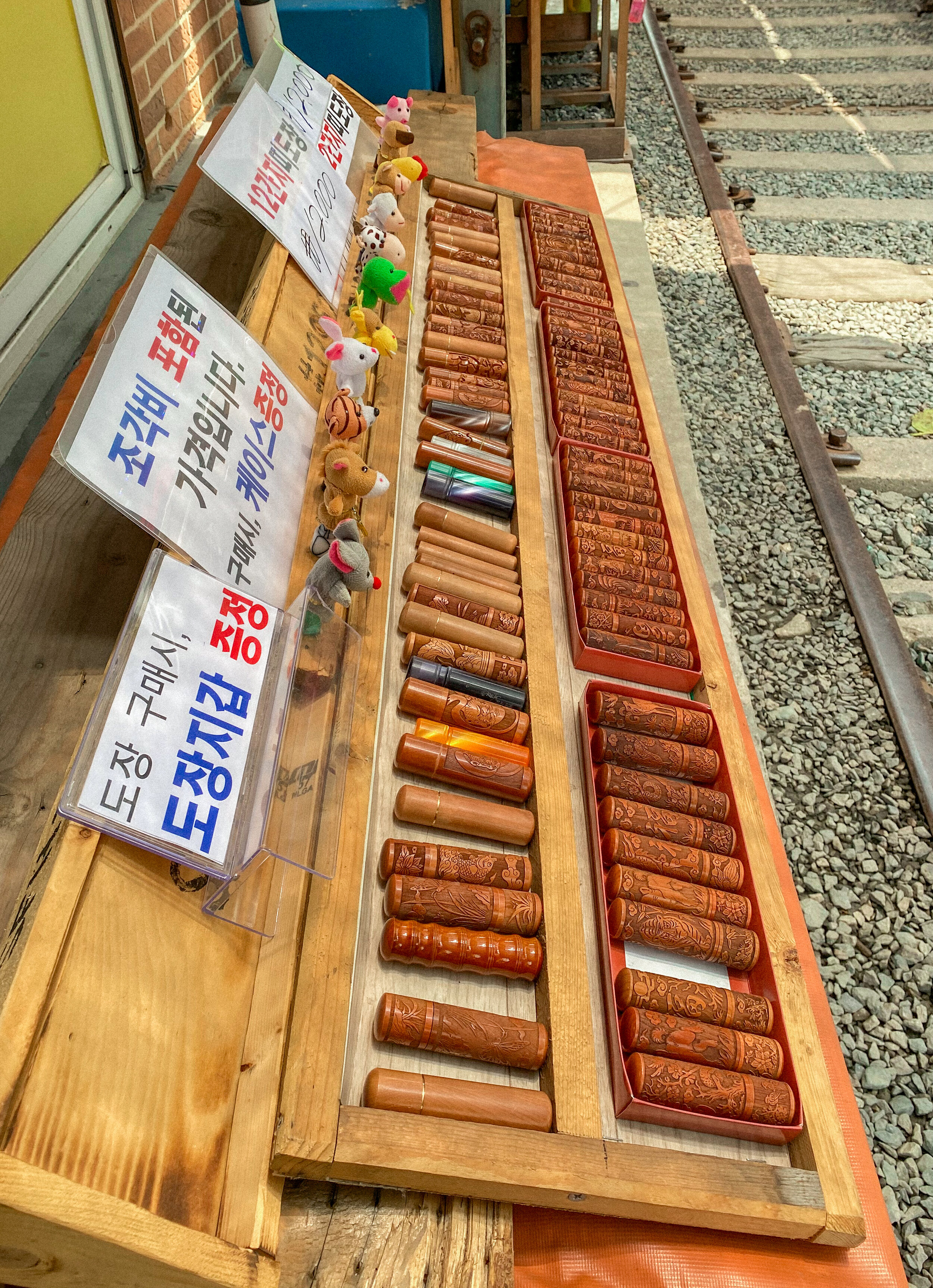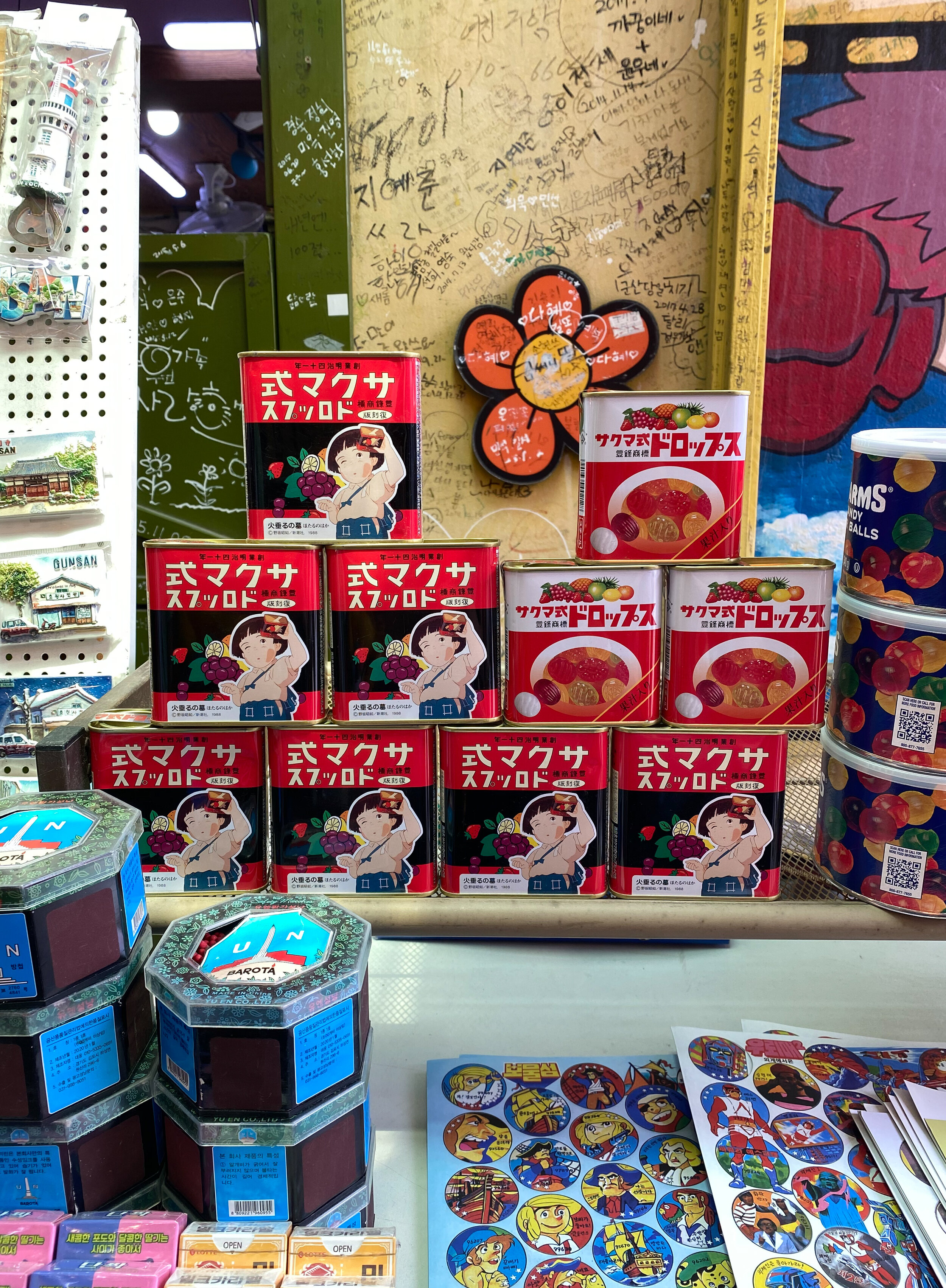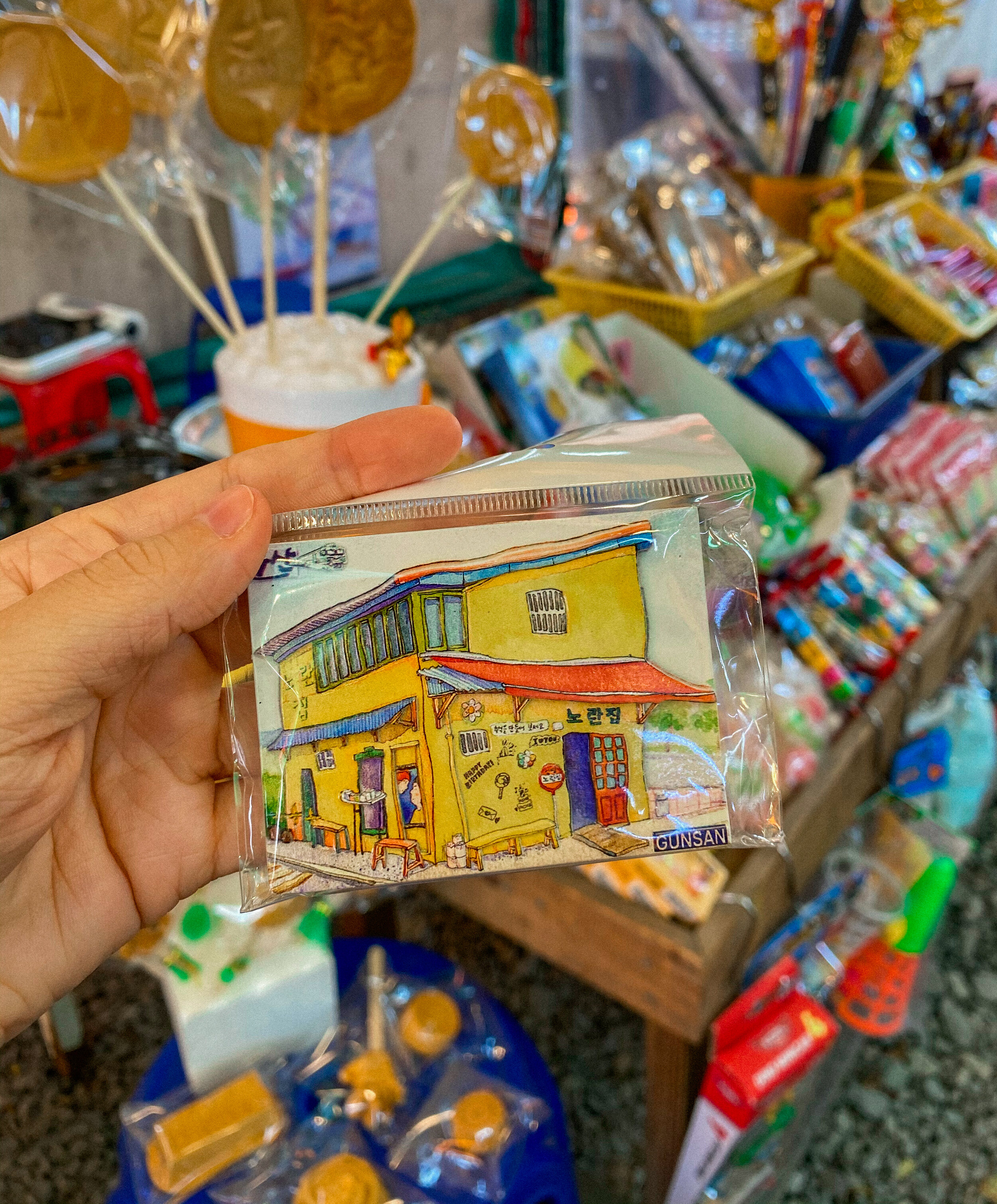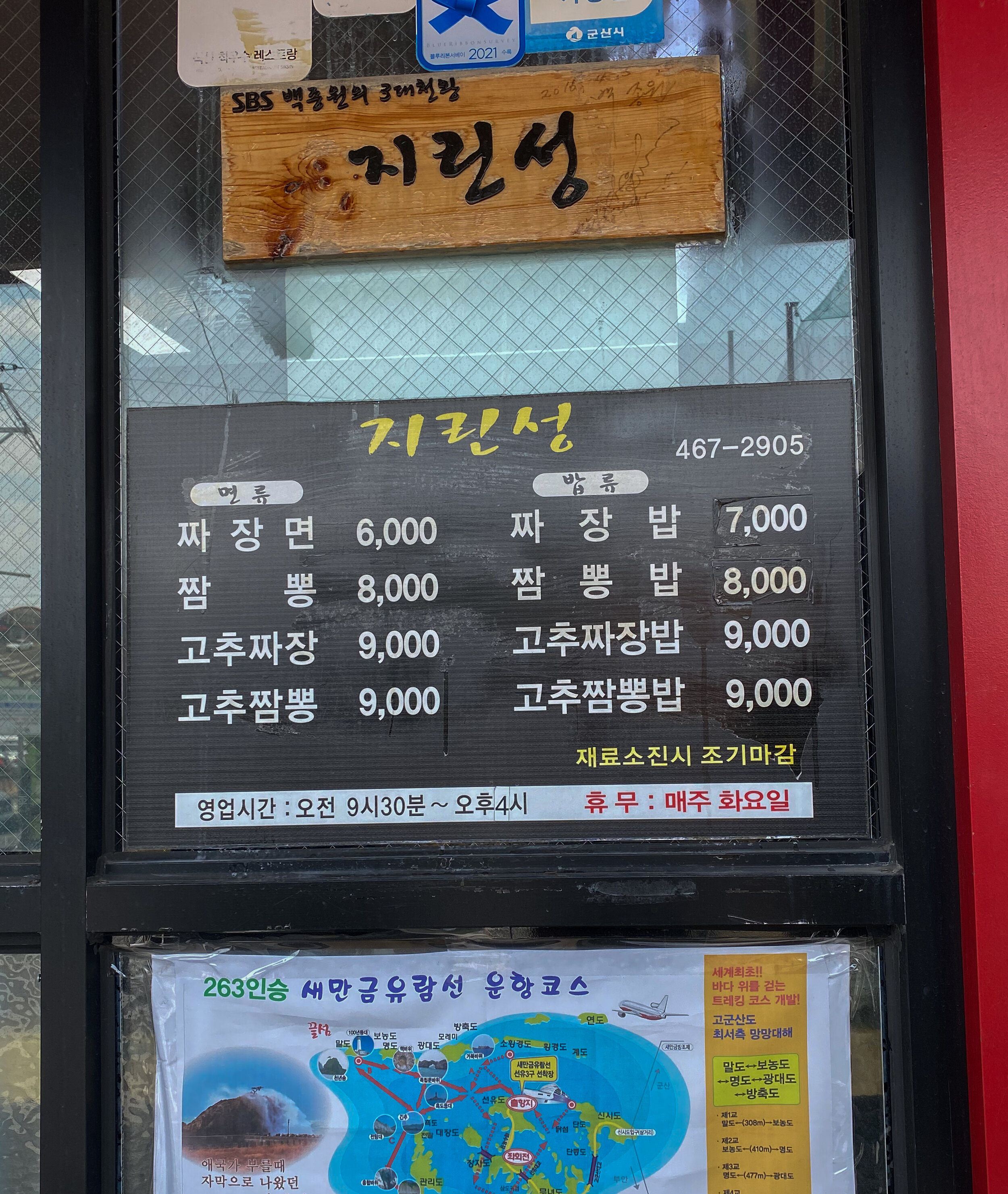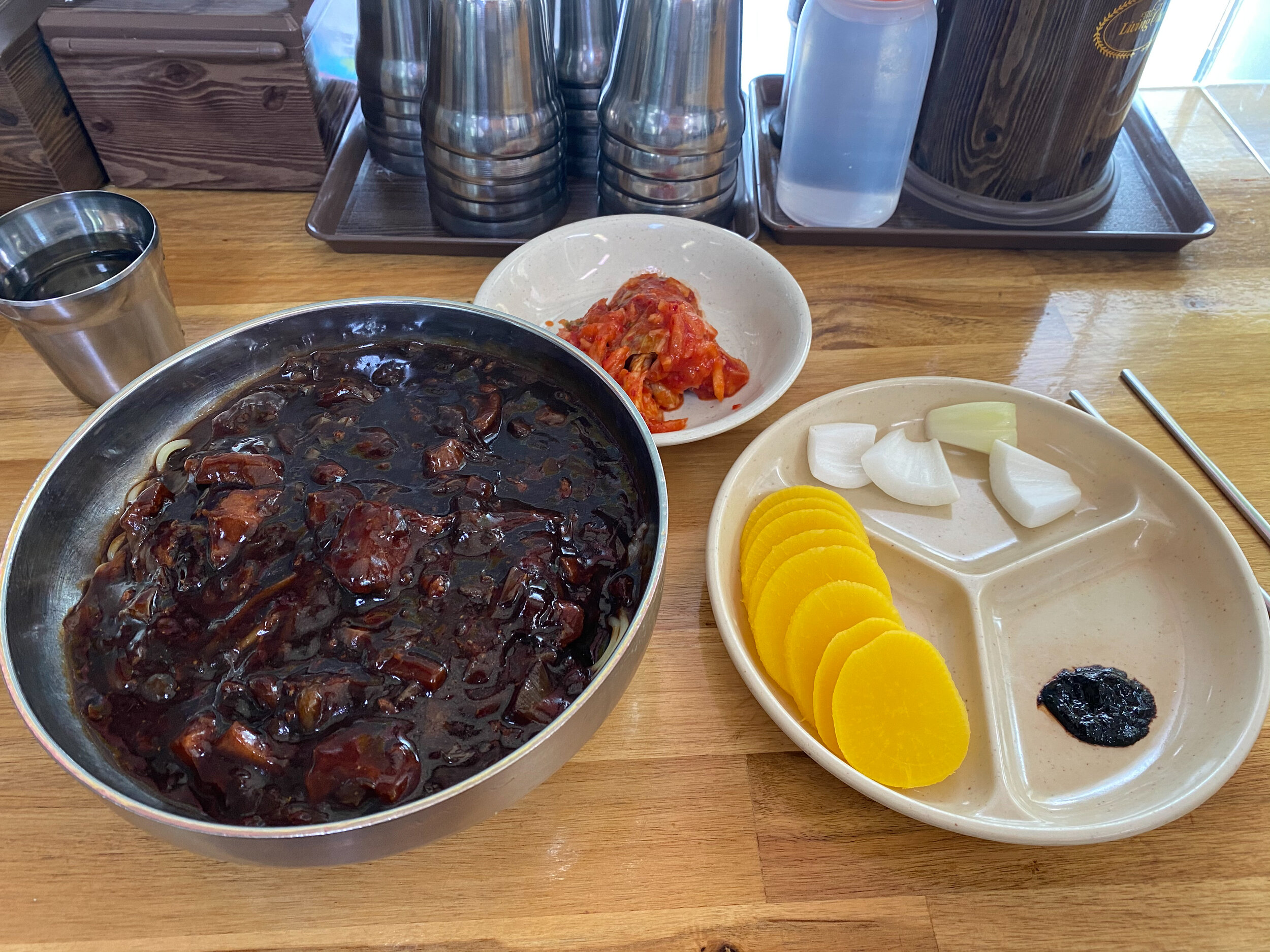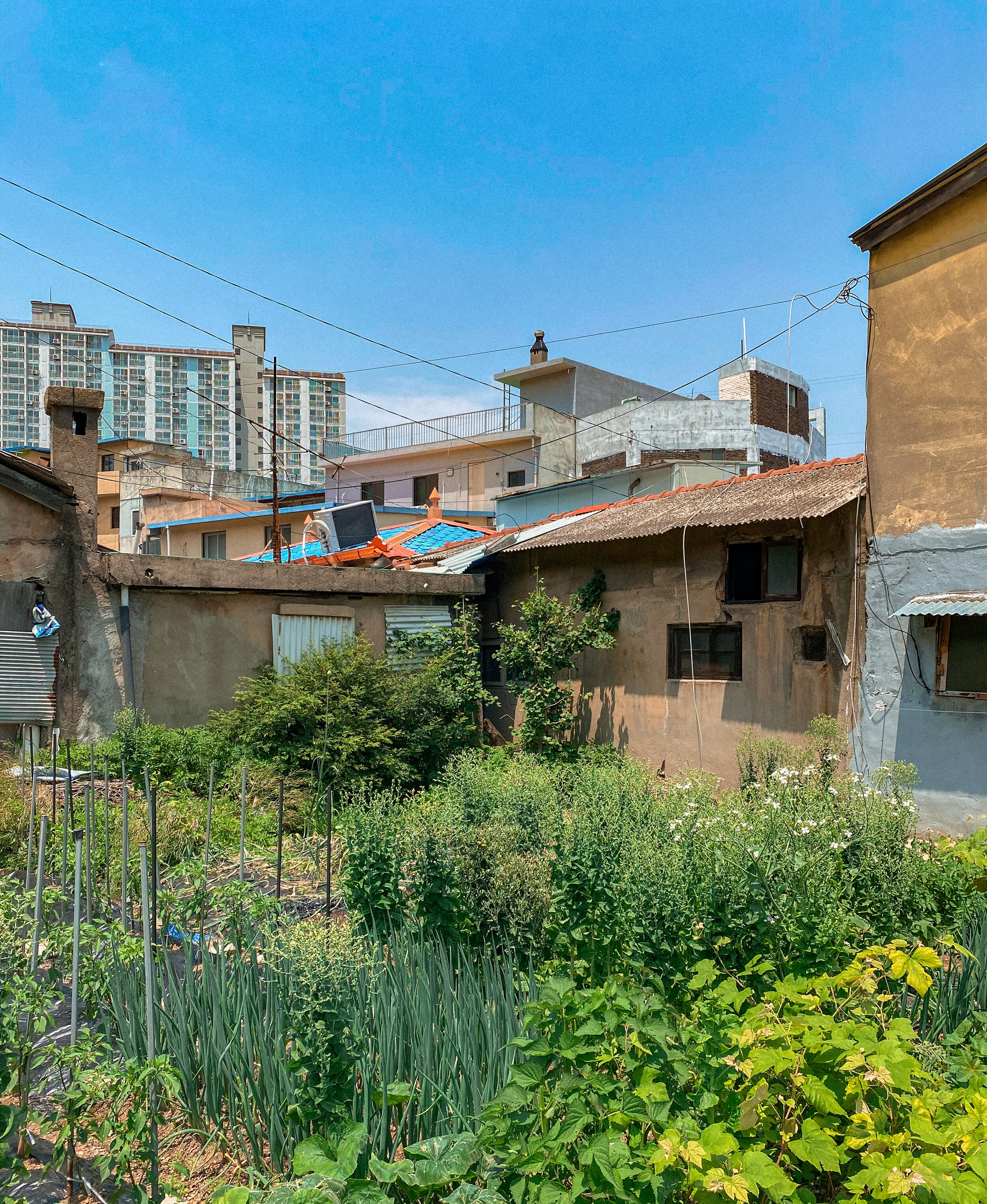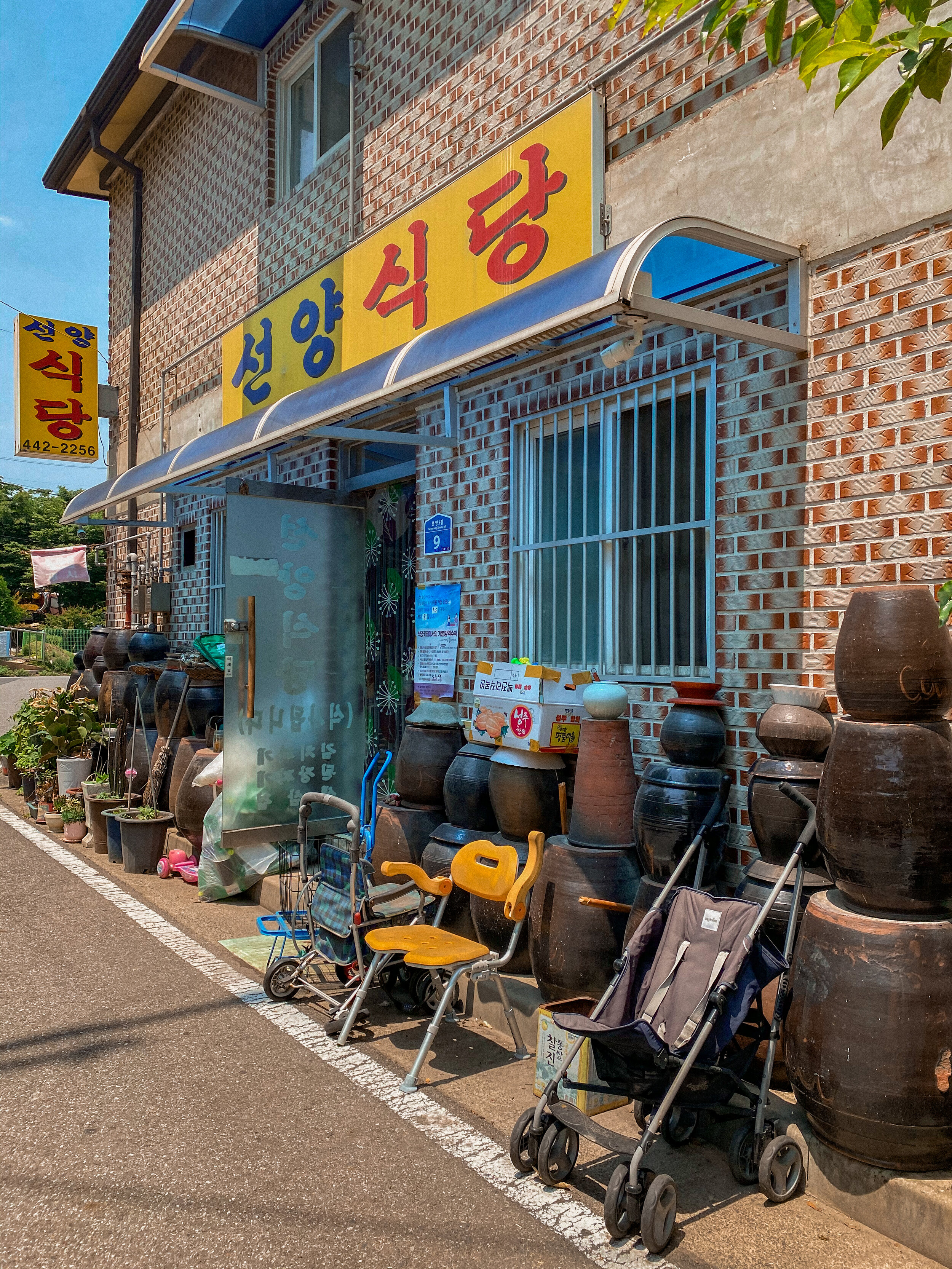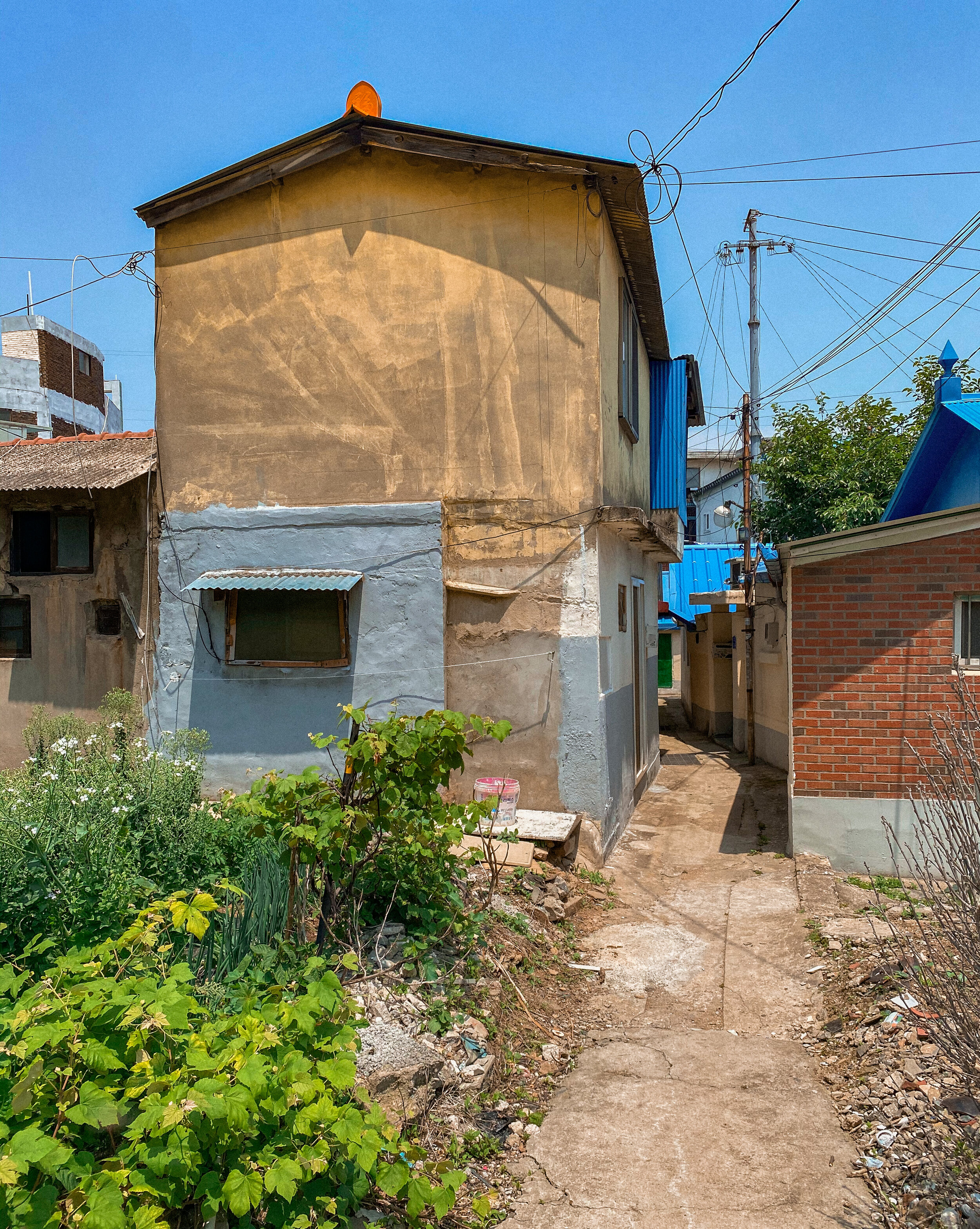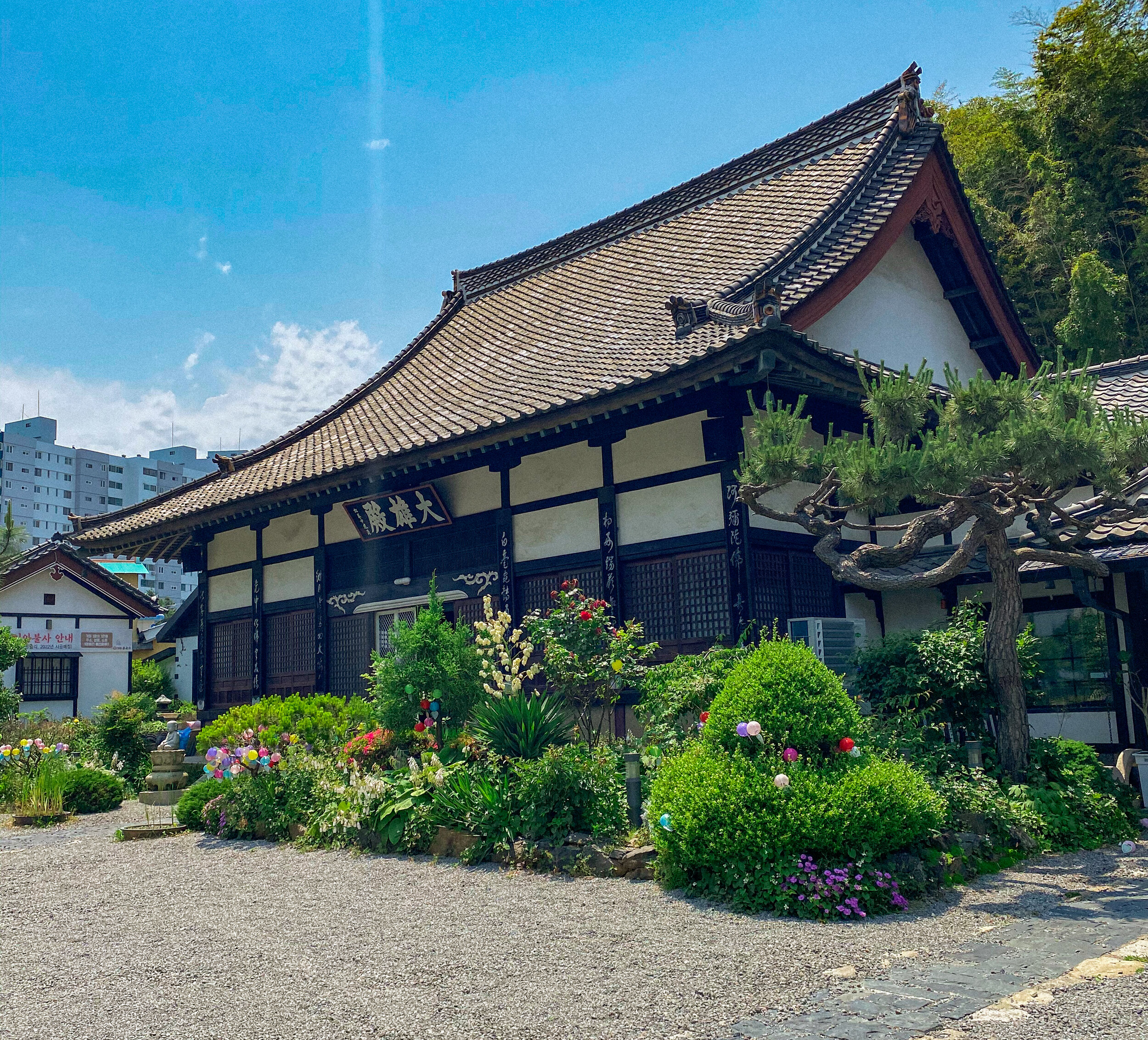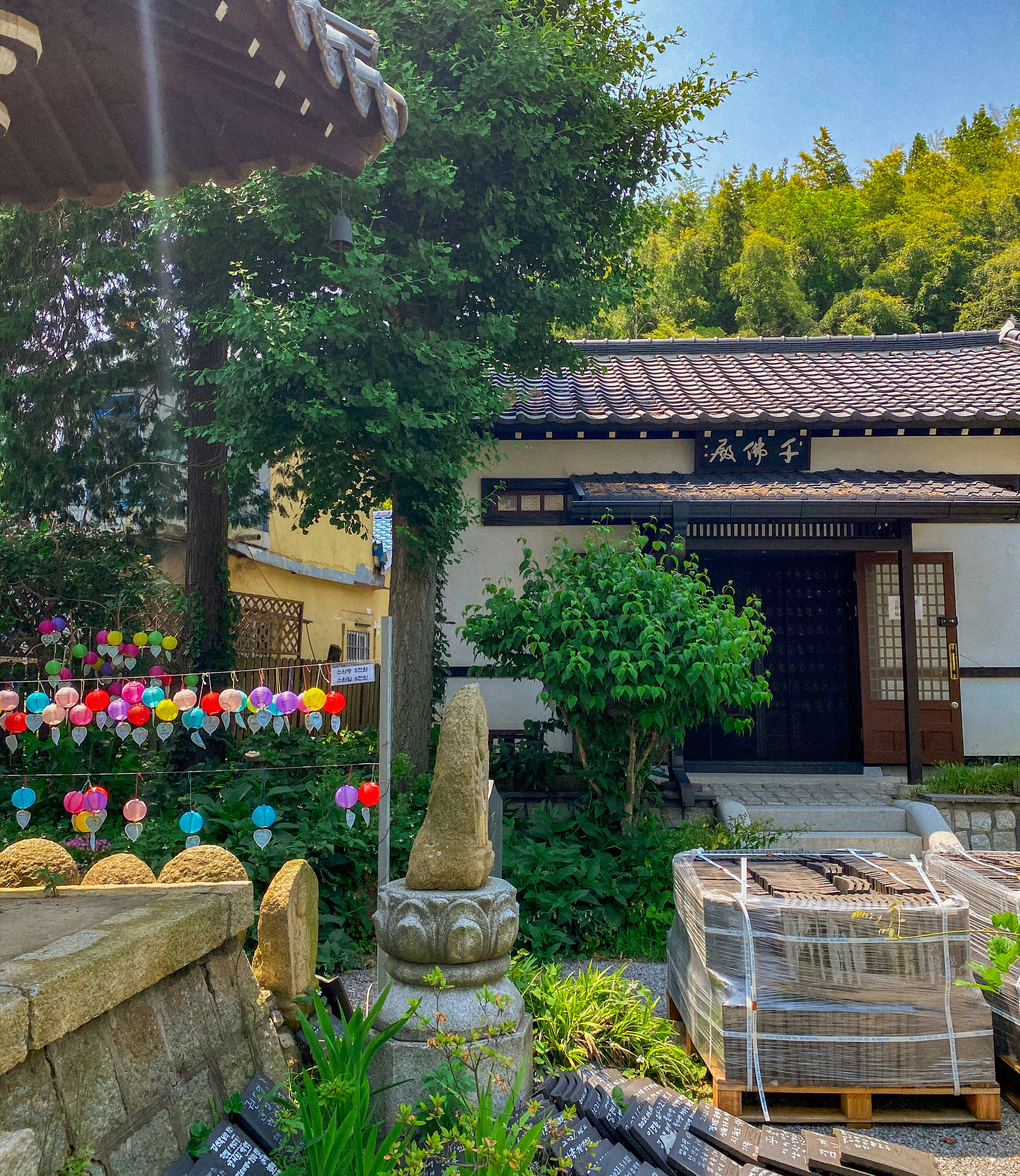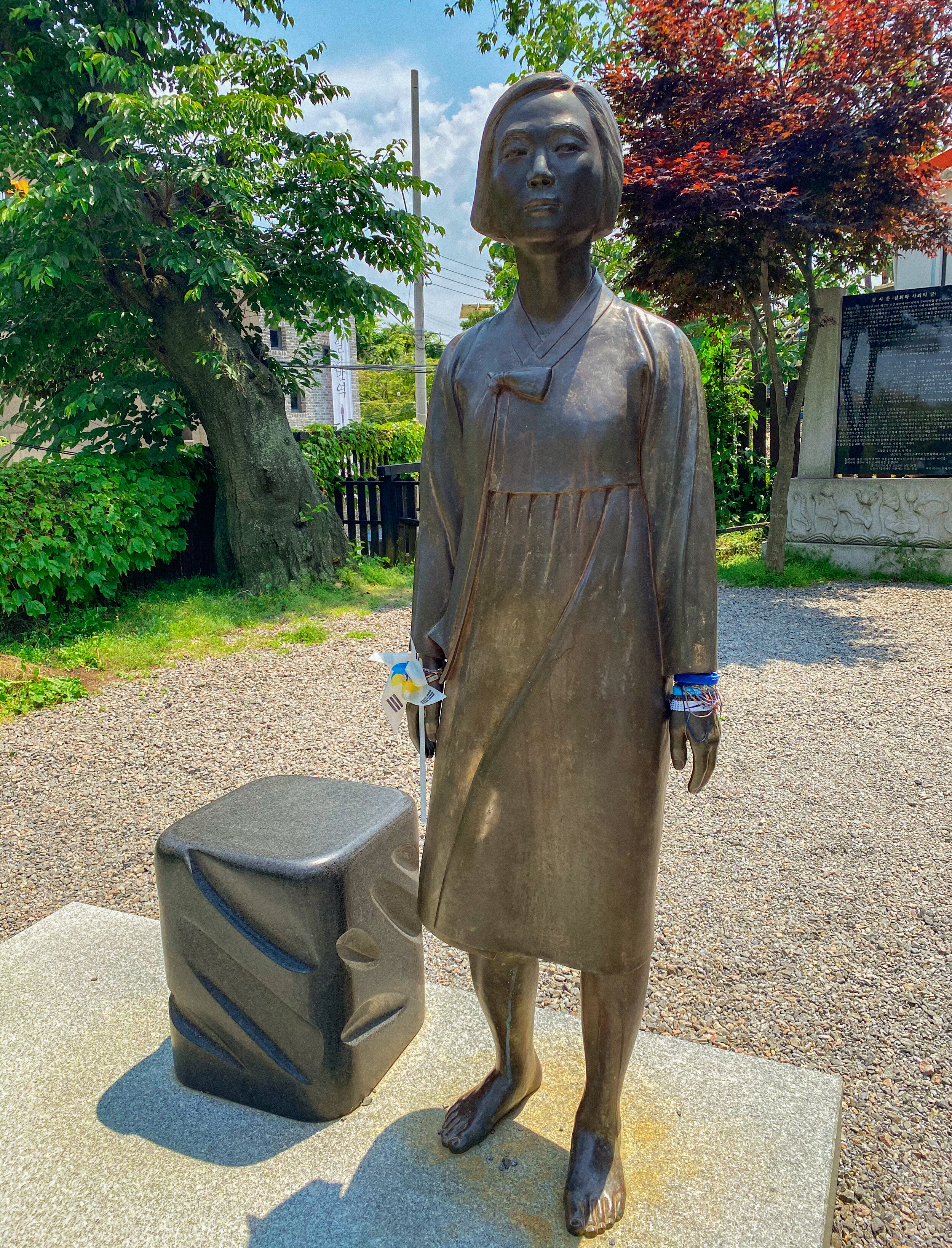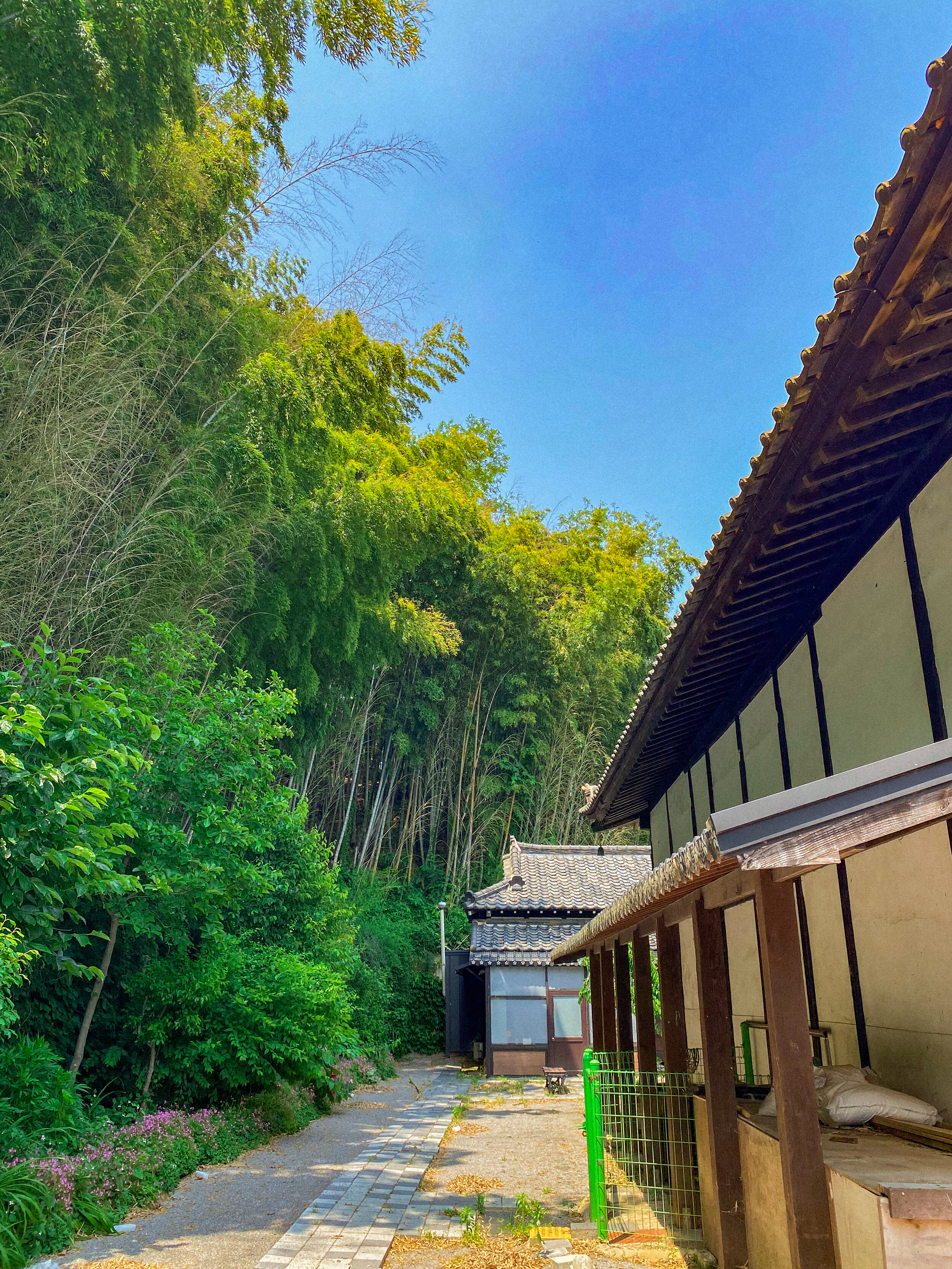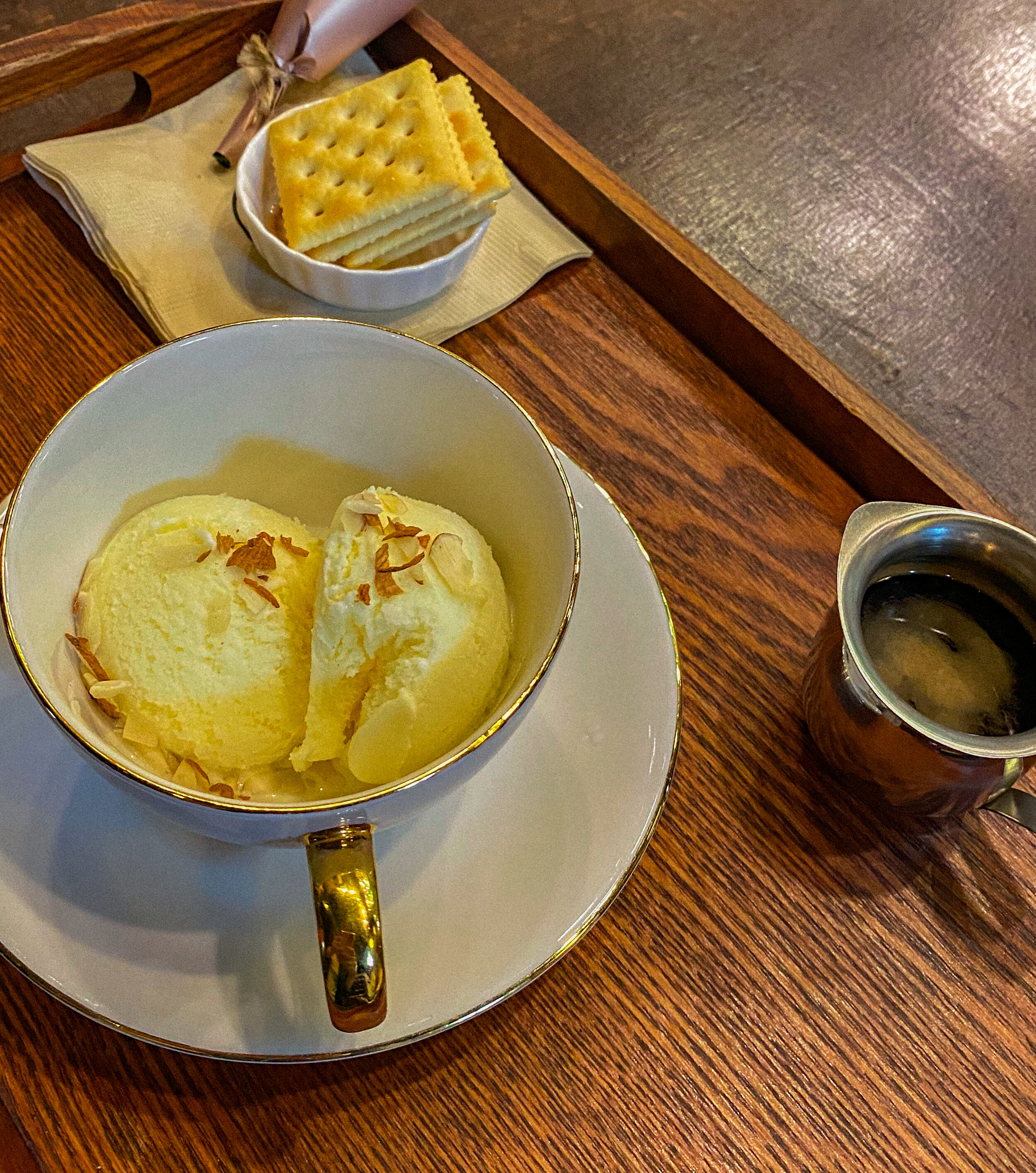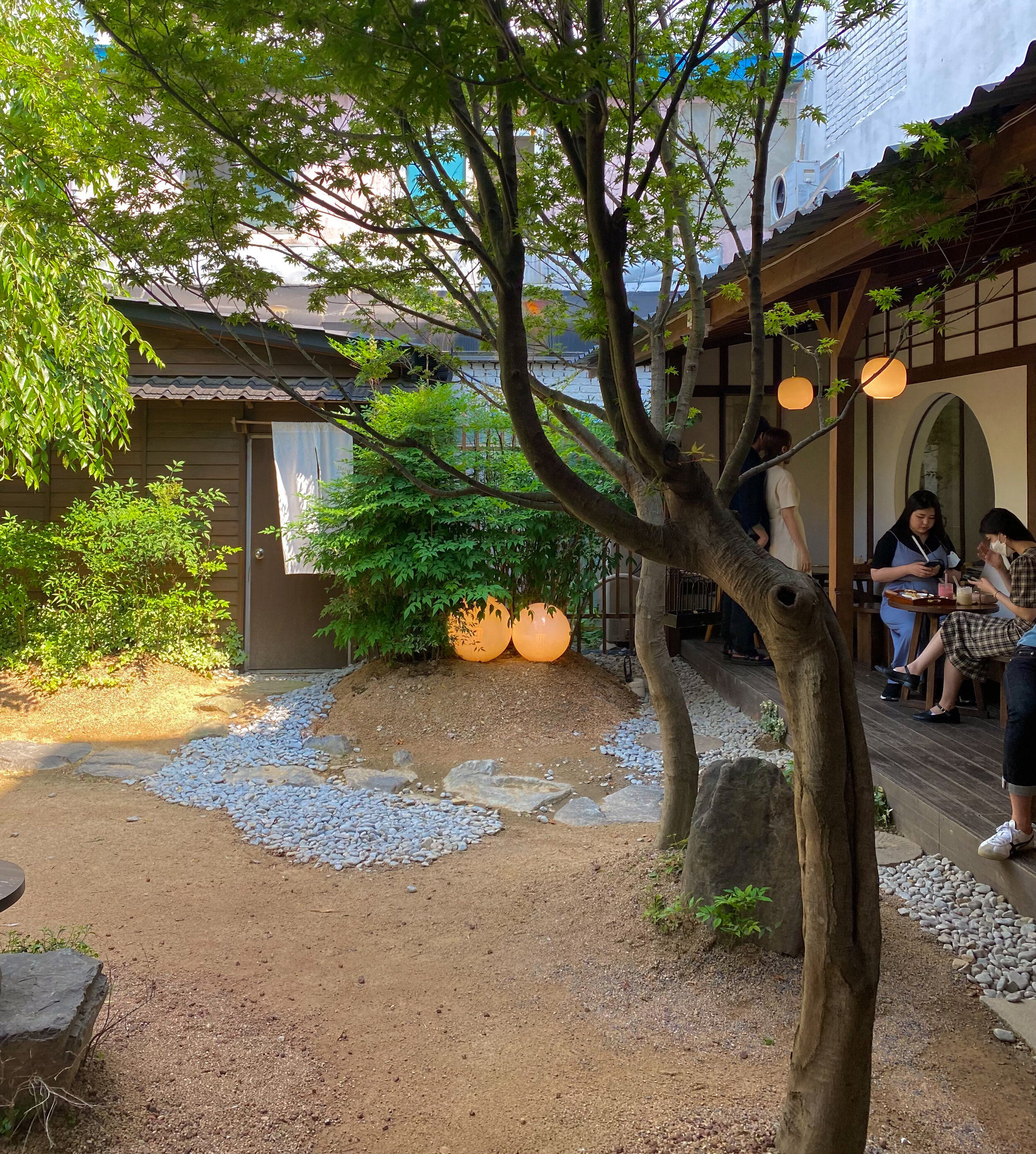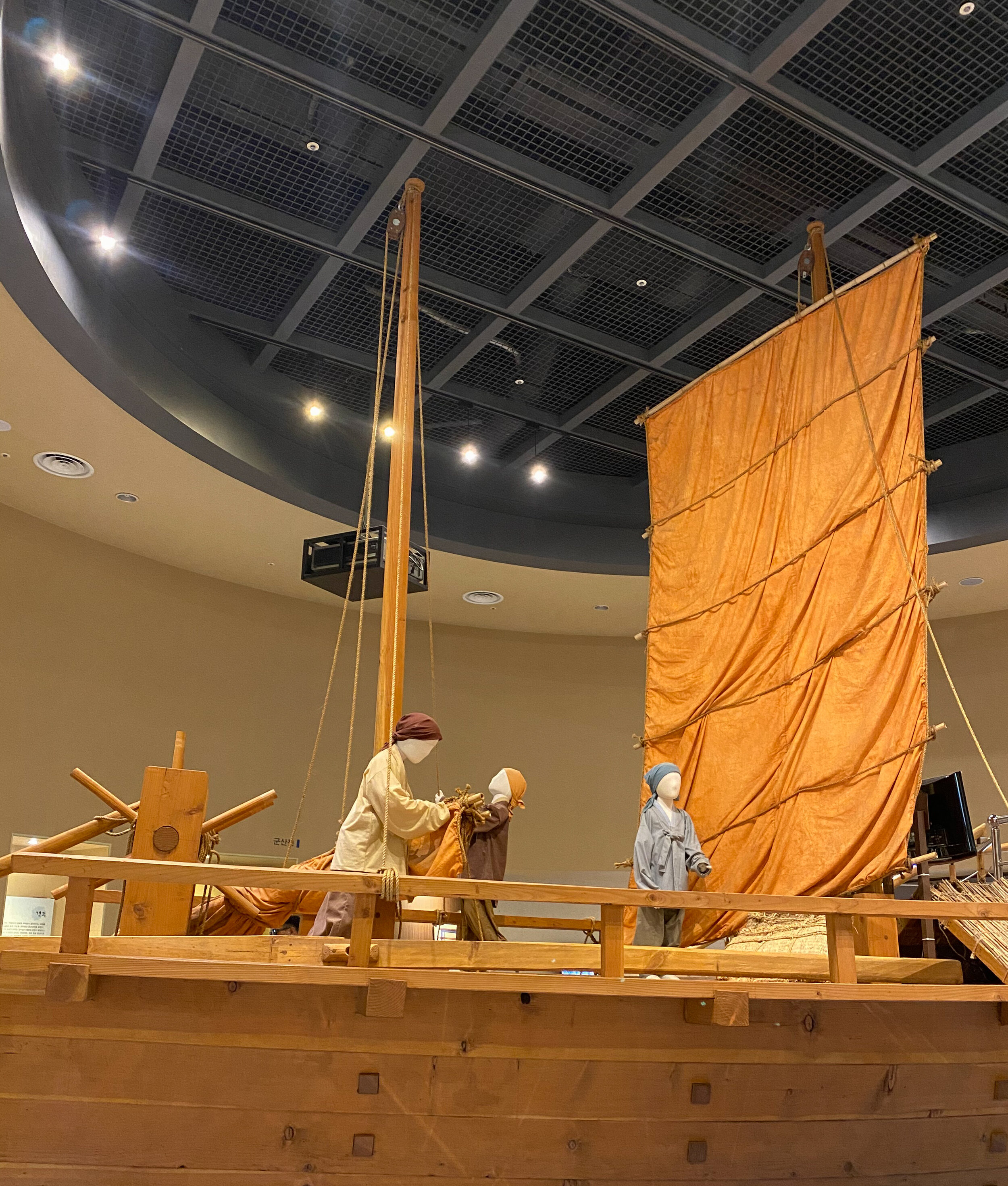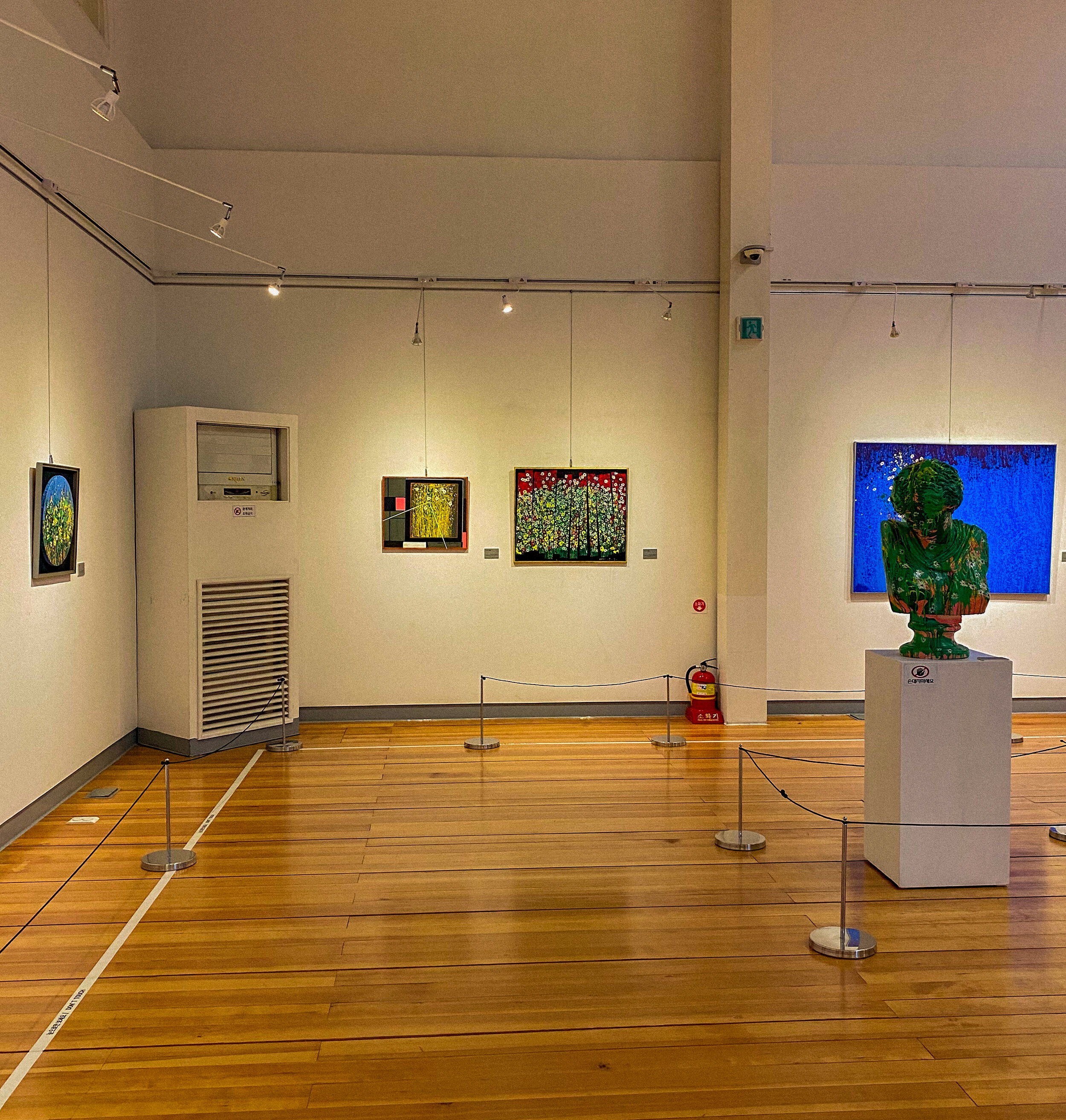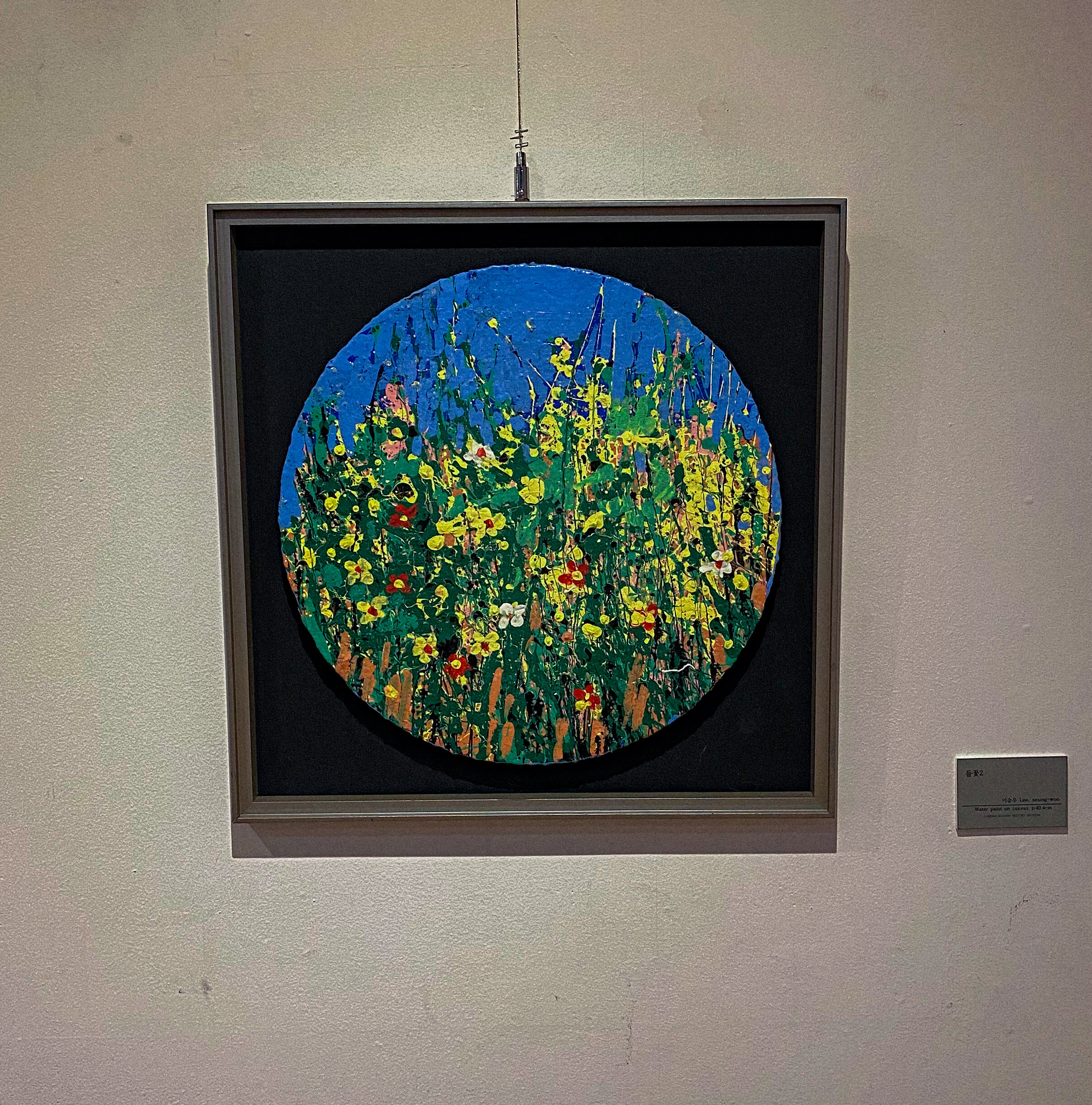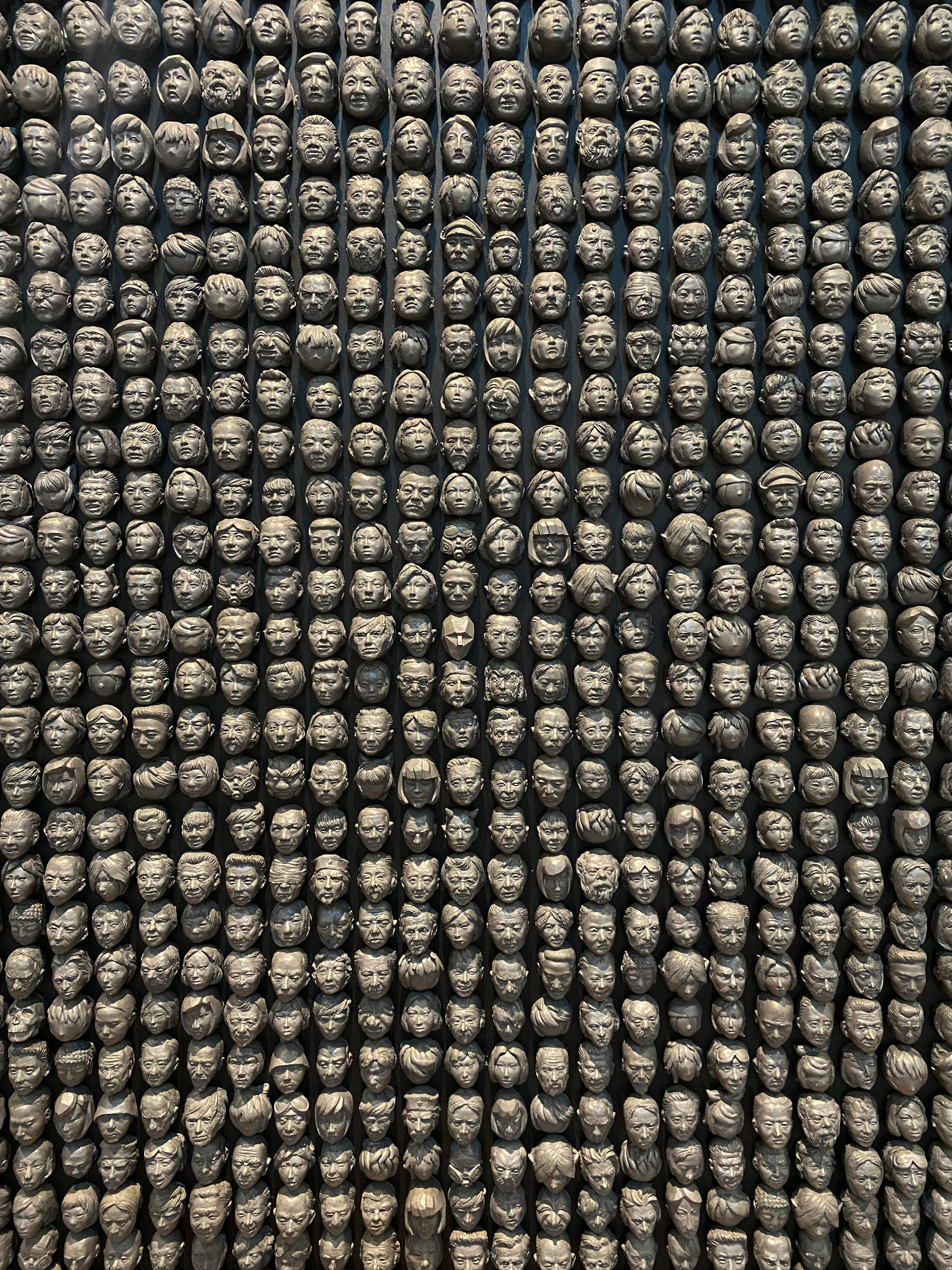A Half Day in Gunsan
On a hot day in June, I took a short day trip to Gunsan, a city on Korea’s west coast about an hour and a half from Daejeon.
I knew little about this old port town. It seems its current status is much diminished from its glory days as a rice exporter in the colonial era.
My Korean coteacher told me about it. There’s the Korean classics: cafes, museums, and good food. And it’s got some of the only remaining examples of Japanese architecture left in Korea. Of course, she also gave me some noodle shop recommendations and y’all know how I am about noodles. So at 9am, I headed out.
By 11am, I arrived at the very small bus station and walked to my first destination, only 15 minutes away. Yeah, like most of small town Korea, Gunsan is small and extremely walkable.
First up was the Gunsan Railroad 경암동철길마을, a tourist attraction centered on the old railway dissecting the town. Shops line the tracks on either side—candy, toys, stamps, old-school student uniform rentals, cartoonists and more. It seems the popular treat is this sugary confection on a stick you can press designs into.
The tracks were pretty crowded on a sunny Sunday; Gunsan is a popular tourist attraction for other Koreans. Still, it was worth seeing the murals and souvenir shops.
I bought myself a magnet (as always) and a traditional stamp, the kind Koreans use on official paperwork. Traditionally, this is your name in Hanja (traditional Chinese characters) but to make things simple, I used Hangul (Korean characters). I’d always wanted one of these so I was really excited!
The day was hot by this point. I waited for my bus (busses in Gunsan run like once an hour—beware) and went to the other side of town for some black bean noodles. My coteacher recommended this place called Jirinseong 지린성, a super popular staple that serves jjajangmyeon and jjampong—Koreanized Chinese food, black bean noodles and spicy seafood soup, respectively.
When I arrived, the line was out the door, down the street and felt like a mile long. I debated leaving, but I was by myself and figured I could stand the wait. Luckily, they’ve got the queue running like a well-oiled machine, and it took only 20 minutes. After checking in with my QR code (Korea’s way of contact tracing), they ushered me in when they realized I was a party of one.
I ordered the jjajangmyeon…er, or so I thought. She thought I meant “gochujjajang”, which is peppers. The lady raised an eyebrow, worried it’d be too spicy for me. Spice is fine, I said. But then I realized the mistake and ran back to get it fixed—thank god I can speak some Korean.
I wasn’t quite sure what gochujjajang would be, and I thought everyone got the plain noodles anyway. But when I told my coteacher about this later, she laughed and said “Who just gets jjajangmyeon?? Everyone gets gochujjajang!” So, uh, if you can handle spice, get that one.
The food was delicious. No surprise, we’re in the Jeolla region.
Full and round with noodles, I left the shop and walked through the sunny alleys. I regretted leaving my camera at home. A small electronics shop was playing Paint it Black, which was a little funny since I’ve had that on repeat lately.
My next stop was the Dongguk-sa 동국사 temple. This one is unique because it’s one of the only Japanese temples left in Korea after the colonization. They still had lanterns up for Buddha’s birthday.
I paused at the memorial for a comfort woman, a sight not unfamiliar in historical towns like this.
Wherever there is lingering history of the Japanese colonization or of WWII, there is usually some memorial to the victims of the Imperial Japanese military’s wartime sexual slavery. It’s a very controversial topic abroad—and something I will never feel qualified to discuss in depth—but important to have a basic knowledge of when you visit (potentially) painful sites like this temple. So, if you’re unfamiliar, I recommend starting with good ol’ wikipedia.
The temple’s aesthetic definitely reminds me of my trip to Japan in 2019—no surprise why—and behind it is a small bamboo forest.
Not far away is even more Japanese architecture, situated squarely in the middle of some very Korean apartment complexes.
The city center, just a five minute walk away, is full of these old estates, often former residences of wealthy Japanese officials. They’ve been preserved and converted to museums and bingsu cafes these days.
All up and down this road were so, so many Korean flags. Gunsan might full of Japanese architecture, but don’t think for a second you’re not in Korea.
Next up on my to-see list was Iseongdang 이성당, the famous bakery just a couple blocks away. I stood in line for about ten minutes to get their red bean bread, a classic treat. People would grab two dozen at a time. I asked for three to take back to my coteachers.
By that point, it was 2pm and getting hot. Perfect time for more caffeine!
My café of choice was Teum 틈, a café built into an old warehouse. When I walked in the lot, I thought maybe it was abandoned or something…it was so empty.
But upon walking inside, it was a dark wood interior full of instagrammers taking photos. I got an affogato, took pictures in their courtyard and sat down for an AC break. This place was cool, but a little crowded. I prefer smaller, cozier cafes to relax in, I think. Still gorgeous though!
I had three museums I wanted to see:
The Modern History Museum
The Art museum
The Architecture museum.
I went in that order since they’re all right next to each other on the pier, and my favorites are in that order. Because of COVID, every museum was free!
The Modern History Museum 군산근대역사박물관 had a lot of artifacts on Gunsan’s historical importance, and I was impressed (and grateful) for the amount of English in the museum.
Back in the day, it was a very important area for exports as well as rice farming. They even set up a little faux-Japanese occupied version of Gunsan.
The Art Museum 군산근대미술관, built into an old bank, offered a solo exhibition by Lee Seung Woo, whose works are characterized by paint-splattered florals against dark washes of color.
The last, the Architecture Museum군산근대건축관, was built into another bank. They had tiny displays of various buildings in Gunsan, extant and not.
By this point, I got really tired and had checked everything off my list. All that was left to do was café hop or eat—and I wanted to save money. So I booked an earlier bus and headed back home!
Really, what more can you ask for from a day trip? Gunsan has everything I love to see when I travel around Korea—history, museums, cafes and reaaaaallly good food. Just make sure you get the gochujjajang.
Thanks for reading!



